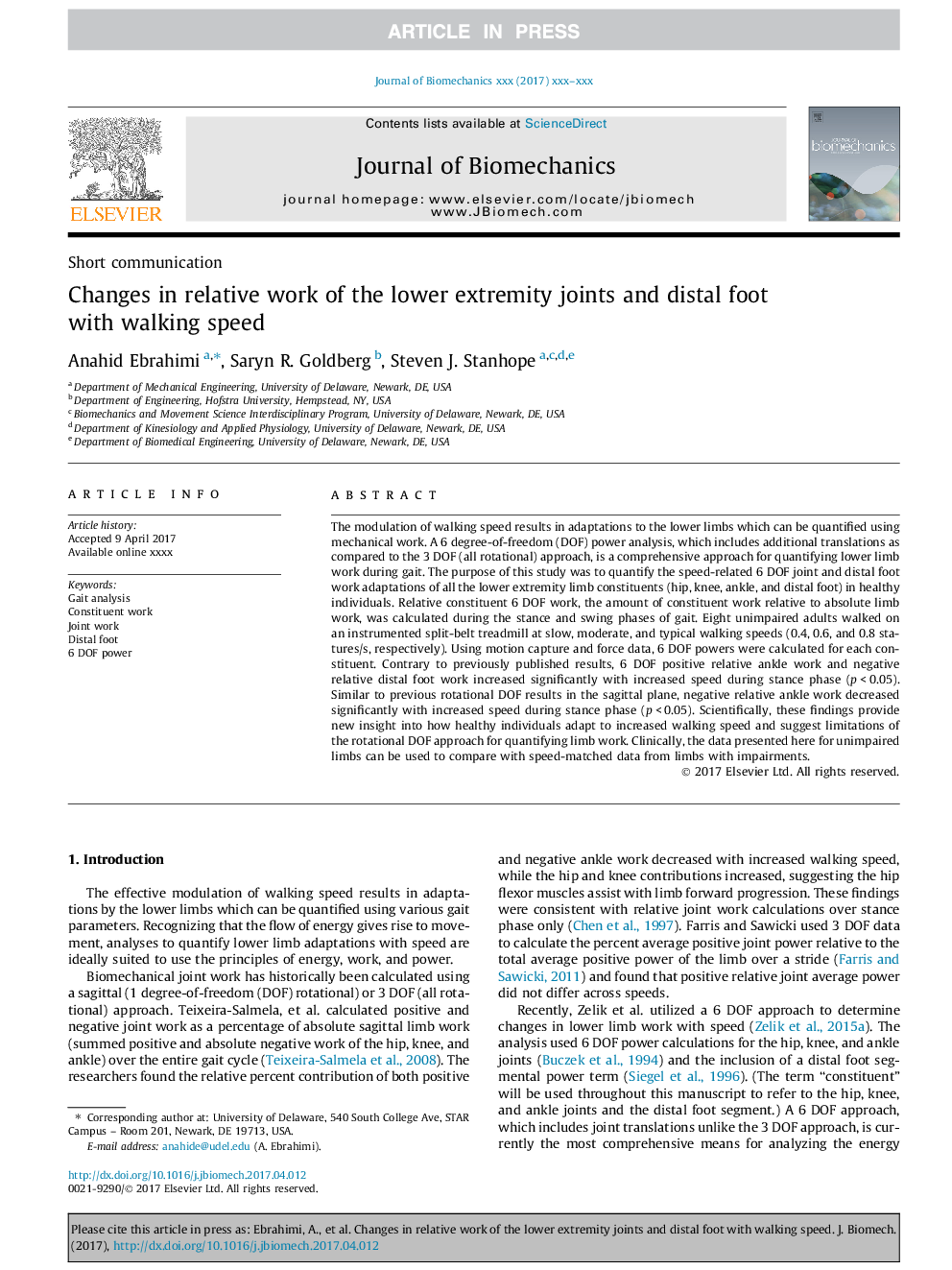| Article ID | Journal | Published Year | Pages | File Type |
|---|---|---|---|---|
| 5032039 | Journal of Biomechanics | 2017 | 5 Pages |
Abstract
The modulation of walking speed results in adaptations to the lower limbs which can be quantified using mechanical work. A 6 degree-of-freedom (DOF) power analysis, which includes additional translations as compared to the 3 DOF (all rotational) approach, is a comprehensive approach for quantifying lower limb work during gait. The purpose of this study was to quantify the speed-related 6 DOF joint and distal foot work adaptations of all the lower extremity limb constituents (hip, knee, ankle, and distal foot) in healthy individuals. Relative constituent 6 DOF work, the amount of constituent work relative to absolute limb work, was calculated during the stance and swing phases of gait. Eight unimpaired adults walked on an instrumented split-belt treadmill at slow, moderate, and typical walking speeds (0.4, 0.6, and 0.8 statures/s, respectively). Using motion capture and force data, 6 DOF powers were calculated for each constituent. Contrary to previously published results, 6 DOF positive relative ankle work and negative relative distal foot work increased significantly with increased speed during stance phase (p < 0.05). Similar to previous rotational DOF results in the sagittal plane, negative relative ankle work decreased significantly with increased speed during stance phase (p < 0.05). Scientifically, these findings provide new insight into how healthy individuals adapt to increased walking speed and suggest limitations of the rotational DOF approach for quantifying limb work. Clinically, the data presented here for unimpaired limbs can be used to compare with speed-matched data from limbs with impairments.
Keywords
Related Topics
Physical Sciences and Engineering
Engineering
Biomedical Engineering
Authors
Anahid Ebrahimi, Saryn R. Goldberg, Steven J. Stanhope,
